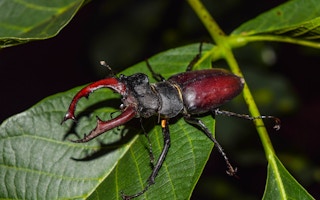The recent United Nations Climate Change Conference (COP27) in Sharm El-Sheikh offered encouraging but insufficient signs of an emerging political consensus on the need for global solidarity in the face of global warming. Now, world leaders need to attend to another existential risk to people and the planet: the alarming and growing loss of biodiversity.
In Montreal this month, governments will come together at the Convention on Biological Diversity’s COP15 summit to agree on a global deal to put the world’s biodiversity on a path to recovery by 2030. We cannot afford for this conference to be treated as a sideshow or afterthought to COP27. The biodiversity crisis is no less important than the climate crisis, and it is escalating quickly. It must be a top political priority for all countries.
Given the current rates of biodiversity loss, some scientists estimate that we are on track to lose three-quarters of the world’s species within only a few centuries. This mass extinction and the ongoing threat to ecosystems and habitats is inextricably linked to climate change. That is why world leaders must come to COP15 with high ambitions and set a mandate for successful negotiations.
To succeed, COP15 must not only deliver an agreement on the overall mission. It also must set clearly defined goals and establish concrete plans to protect 30 per cent of all land and ocean areas by 2030. Leaders must come to Montreal with both the national plans and the financing needed to advance these objectives.
When I was first elected president of Colombia in 2010, I found myself running a country that was almost entirely flooded for 18 months. The climate pattern known as La Niña, aggravated by global warming, meant near-biblical rainfall. Lacking the tools or knowhow to handle the situation, we saw that we needed to make peace with nature. Experts advised focusing on the protection of biodiversity, so that is what we did. Colombia, one of the world’s most biodiverse countries, now has a combined protected area that is larger than Japan or the United Kingdom.
We understand both the value of nature and what we stand to lose when it is eroded. We also have come to appreciate what we can learn from those with the closest relationship to the land. Many indigenous communities had been warning of an ecological crisis for decades, only to have their voices and rights dismissed.
Nature loss hurts people everywhere. It is already harming human health, reducing air quality, undermining our ability to grow food or obtain water, exacerbating extreme weather events, and weakening our ability to mitigate or adapt to climate change. These problems make biodiversity loss a security issue. Continued damage to our ecosystems is one of the biggest long-term risks to our societies.
As an economic matter, the collapse of certain essential ecosystems is all it would take to push countries like mine into bankruptcy. Consider, for example, that around 75 per cent of food crops rely on animal pollinators such as bees, birds, and butterflies. The loss of all animal pollinators seems unthinkable, yet it is a real threat. And if food becomes scarcer, the poorest will suffer first.
Moreover, the destruction of habitats is a serious public health threat, not least because it is bringing humans and animals into closer and more frequent contact. The World Health Organisation warns that this is both causing existing infectious diseases to spread more quickly and accelerating the emergence of novel zoonotic pathogens.
Finally, not only is climate change one of the main drivers of biodiversity loss; the destruction of ecosystems is undermining the planet’s ability to neutralise the effects of greenhouse gas emissions. South America’s Andean forests, for example, act as critical carbon sinks, absorbing atmospheric carbon dioxide that would otherwise be hastening the pace of global warming.
Forests, wetlands, underwater kelp forests, mangroves, and other natural systems also provide protection from extreme weather events such as floods, droughts, heatwaves, and storms, by acting as natural buffers or reservoirs. Biodiversity loss not only makes climate change worse, but also eliminates our best line of defense against it.
COP15 offers a major opportunity for governments to achieve a breakthrough – equivalent to the 2015 Paris climate agreement – that unites the world behind one mission: to halt, and ideally reverse, biodiversity loss by the end of this decade.
To be sure, the current effort suffers from a lack of high-level political engagement, leading many to question why we have two separate convention processes for issues that go hand in hand. They are right to wonder. Looking ahead, I would like to see us bring both conventions together, in recognition of the fact that climate change and biodiversity loss must be addressed in tandem.
In the meantime, though, we cannot afford further delay on setting ambitious targets to protect and restore biodiversity this decade. The recent “loss and damage” agreement at COP27 demonstrated that, with sufficient resolve, countries can work together on seemingly intractable issues. With time running out, world leaders must nurture this spirit of cooperation in Montreal.
Juan Manuel Santos is the former president of Colombia (2010-2018) and a member of The Elders, an international non-governmental organisation of public figures, including senior statesmen, peace activists and human rights advocates. He is a Nobel Peace Prize laureate.
Copyright: Project Syndicate, 2022.
www.project-syndicate.org









